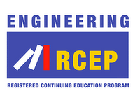
Registered Continuing Education Program
The Registered Continuing Education Program (RCEP) is a nationwide portal for professional development education and record-keeping. Continuing education providers and education seekers (engineers, surveyors, and related Architecture/Engineering/Construction (A/E/C) industry professionals) can tap into a single, comprehensive, and convenient education management system.
Click to Learn More About the Registered Continuing Education Program
Visit www.rcep.net and Join Now!

 Specifying the right sectional door system for your commercial project can have a great effect on the health, safety, and welfare of building occupants. This course covers commercial sectional door systems, including the various types of doors available and their associated characteristics including energy efficiency and durability, along with a discussion on how to specify the correct door to meet project requirements.
Specifying the right sectional door system for your commercial project can have a great effect on the health, safety, and welfare of building occupants. This course covers commercial sectional door systems, including the various types of doors available and their associated characteristics including energy efficiency and durability, along with a discussion on how to specify the correct door to meet project requirements.

https://redirect.aecdaily.com/s15358/www.aecdaily.com/course/693296
This course is ONLINE: SELF-PACED. Experience it on your own schedule, at your convenience.

 Exterior cladding must be long lasting, maintenance-free, and aesthetically pleasing to meet the design demands of property and homeowners. An innovative composite cladding solution, developed with a patented technology that incorporates glass-reinforced polymers and graphite-infused polystyrene, meets and exceeds these requirements. This course describes the design challenges property and homeowners often face when selecting cladding, and it offers a solution. Performance characteristics such as thermal resistance, wind load resistance, and fire ratings are discussed. Installation techniques and a case study are also examined.
Exterior cladding must be long lasting, maintenance-free, and aesthetically pleasing to meet the design demands of property and homeowners. An innovative composite cladding solution, developed with a patented technology that incorporates glass-reinforced polymers and graphite-infused polystyrene, meets and exceeds these requirements. This course describes the design challenges property and homeowners often face when selecting cladding, and it offers a solution. Performance characteristics such as thermal resistance, wind load resistance, and fire ratings are discussed. Installation techniques and a case study are also examined.

https://redirect.aecdaily.com/s993236/www.aecdaily.com/course/1010166
This course contains sustainable design information. See the course details page for more information.
This course is ONLINE: SELF-PACED. Experience it on your own schedule, at your convenience.

 With faster build speeds, superior environmental control performance, and exceptional design flexibility, insulated metal panels (IMPs) offer many advantages over other conventional building envelope systems. This course details these and other aspects of IMPs and why they can be considered the key component of “the perfect wall.”
With faster build speeds, superior environmental control performance, and exceptional design flexibility, insulated metal panels (IMPs) offer many advantages over other conventional building envelope systems. This course details these and other aspects of IMPs and why they can be considered the key component of “the perfect wall.”

https://redirect.aecdaily.com/s9727/www.aecdaily.com/course/848960
This course is ONLINE: SELF-PACED. Experience it on your own schedule, at your convenience.

 This course explains and illustrates how high-performance, fully composite insulated precast sandwich wall panels can be designed and specified to manage aesthetics, quality, performance, and cost. It explores the pros, cons, and attributes of wythe connectors such as carbon fiber reinforced polymer (CFRP) grid trusses, options for achieving continuous insulation, manufacturing and testing procedures, and strategies for managing costs. It concludes by providing illustrative sample installations to demonstrate the broad range of building types and appearances that can be created with insulated precast enclosures.
This course explains and illustrates how high-performance, fully composite insulated precast sandwich wall panels can be designed and specified to manage aesthetics, quality, performance, and cost. It explores the pros, cons, and attributes of wythe connectors such as carbon fiber reinforced polymer (CFRP) grid trusses, options for achieving continuous insulation, manufacturing and testing procedures, and strategies for managing costs. It concludes by providing illustrative sample installations to demonstrate the broad range of building types and appearances that can be created with insulated precast enclosures.

https://redirect.aecdaily.com/s789181/www.aecdaily.com/course/1123655
This course contains sustainable design information. See the course details page for more information.
This course is ONLINE: SELF-PACED. Experience it on your own schedule, at your convenience.

 The need to evaluate thermal bridging in a building’s design and performance has become more prevalent because of the increasing requirements for more energy-efficient buildings. This course provides an introduction to thermal bridging, energy code requirements, and the use of thermal break solutions designed to improve energy efficiency in the building envelope.
The need to evaluate thermal bridging in a building’s design and performance has become more prevalent because of the increasing requirements for more energy-efficient buildings. This course provides an introduction to thermal bridging, energy code requirements, and the use of thermal break solutions designed to improve energy efficiency in the building envelope.

https://redirect.aecdaily.com/s877426/www.aecdaily.com/course/904671
This course contains sustainable design information. See the course details page for more information.
This course is ONLINE: SELF-PACED. Experience it on your own schedule, at your convenience.

 Single-skin metal siding can be used for a wide range of projects, from commercial buildings to educational, healthcare, residential, agricultural, and even high-end architectural designs. These siding panels can also contribute to green designs and certification programs. This course explores the different types of single-skin metal siding, specification details, and performance and design considerations.
Single-skin metal siding can be used for a wide range of projects, from commercial buildings to educational, healthcare, residential, agricultural, and even high-end architectural designs. These siding panels can also contribute to green designs and certification programs. This course explores the different types of single-skin metal siding, specification details, and performance and design considerations.

https://redirect.aecdaily.com/s719/www.aecdaily.com/course/870117
This course contains sustainable design information. See the course details page for more information.
This course is ONLINE: SELF-PACED. Experience it on your own schedule, at your convenience.

 Over time, different types of concrete have been developed for a variety of architectural applications, including cast stone, precast panels and shapes, glass fiber reinforced concrete (GFRC), and ultra-high-performance concrete (UHPC). These concrete forms differ in physical properties, applications, and cost. This course reviews the four essential types of architectural precast including their composition, functions, advantages, and specifications to facilitate the proper selection based on project requirements.
Over time, different types of concrete have been developed for a variety of architectural applications, including cast stone, precast panels and shapes, glass fiber reinforced concrete (GFRC), and ultra-high-performance concrete (UHPC). These concrete forms differ in physical properties, applications, and cost. This course reviews the four essential types of architectural precast including their composition, functions, advantages, and specifications to facilitate the proper selection based on project requirements.

https://redirect.aecdaily.com/s771083/www.aecdaily.com/course/1061935
This course is ONLINE: SELF-PACED. Experience it on your own schedule, at your convenience.

 Water and moisture intrusion can affect everything from a building’s structural durability to its indoor air quality. Understanding the material options, installation, and testing criteria for high-performing weather-resistant barriers (WRBs) can help specifiers manage present and future moisture concerns.
Water and moisture intrusion can affect everything from a building’s structural durability to its indoor air quality. Understanding the material options, installation, and testing criteria for high-performing weather-resistant barriers (WRBs) can help specifiers manage present and future moisture concerns.

https://redirect.aecdaily.com/s431992/www.aecdaily.com/course/1095678
This course is ONLINE: SELF-PACED. Experience it on your own schedule, at your convenience.

 Fireplaces have become standard in living rooms and dens, but gas and electric fireplaces can enhance many other areas of the home. This course reviews studies on the health and wellness benefits of fireplaces; architects and designers will learn how to add value when working with clients by providing them with scientific research that shows including fireplaces in home design has positive impacts on physical and mental health. Heat management methods, fireplace types and configurations, and media and design options are also discussed.
Fireplaces have become standard in living rooms and dens, but gas and electric fireplaces can enhance many other areas of the home. This course reviews studies on the health and wellness benefits of fireplaces; architects and designers will learn how to add value when working with clients by providing them with scientific research that shows including fireplaces in home design has positive impacts on physical and mental health. Heat management methods, fireplace types and configurations, and media and design options are also discussed.

https://redirect.aecdaily.com/s497605/www.aecdaily.com/course/1097535
This course is part of one or more "Course Collections". Click here to view the details.
This course is ONLINE: SELF-PACED. Experience it on your own schedule, at your convenience.

 Various control strategies are used to prevent rain from penetrating a building envelope and entering a building assembly. This course compares exterior wall metal cladding systems and takes an in-depth look at the design options, testing, specifications, environmental implications, and the detailing of single-skin metal panel systems as used in a pressure-equalized rainscreen (PER) application.
Various control strategies are used to prevent rain from penetrating a building envelope and entering a building assembly. This course compares exterior wall metal cladding systems and takes an in-depth look at the design options, testing, specifications, environmental implications, and the detailing of single-skin metal panel systems as used in a pressure-equalized rainscreen (PER) application.

https://redirect.aecdaily.com/s681831/www.aecdaily.com/course/870548
This course is ONLINE: SELF-PACED. Experience it on your own schedule, at your convenience.

 Glass wall and door systems endow architectural concepts with transparent elegance. This course covers the benefits of interior glass wall and door systems and includes discussions on types of glass walls and operable systems; door types, rails, headers, hardware, and applications; glass types; and access control. It presents design and code considerations and specification of glass assemblies.
Glass wall and door systems endow architectural concepts with transparent elegance. This course covers the benefits of interior glass wall and door systems and includes discussions on types of glass walls and operable systems; door types, rails, headers, hardware, and applications; glass types; and access control. It presents design and code considerations and specification of glass assemblies.

https://redirect.aecdaily.com/s831648/www.aecdaily.com/course/879870
This course contains accessible design information. See the course details page for more information.
This course is part of one or more "Course Collections". Click here to view the details.
This course is ONLINE: SELF-PACED. Experience it on your own schedule, at your convenience.

 The surface coating is the first line of defense in prepainted metal, and one of the most important elements to consider as part of a metal purchase. Selecting the right coating, finish, and paint system can affect product lifespan, energy efficiency, and aesthetic appeal. This course discusses the composition of prepainted metal, its application and performance, and examines the building and environmental factors that may influence the type of paint system specified.
The surface coating is the first line of defense in prepainted metal, and one of the most important elements to consider as part of a metal purchase. Selecting the right coating, finish, and paint system can affect product lifespan, energy efficiency, and aesthetic appeal. This course discusses the composition of prepainted metal, its application and performance, and examines the building and environmental factors that may influence the type of paint system specified.

https://redirect.aecdaily.com/s841414/www.aecdaily.com/course/848681
This course contains sustainable design information. See the course details page for more information.
This course is ONLINE: SELF-PACED. Experience it on your own schedule, at your convenience.

 People are captivated by birds, and for many, they hold intrinsic value. However, millions of birds collide with glass every year, significantly impacting avian populations. This course examines the ecological services that birds perform that impact human wellness and safety and reviews how bird-friendly glass can mitigate collisions. Various bird-friendly glass examples are also identified, and design guidelines and existing legislation mandating bird-friendly buildings is discussed.
People are captivated by birds, and for many, they hold intrinsic value. However, millions of birds collide with glass every year, significantly impacting avian populations. This course examines the ecological services that birds perform that impact human wellness and safety and reviews how bird-friendly glass can mitigate collisions. Various bird-friendly glass examples are also identified, and design guidelines and existing legislation mandating bird-friendly buildings is discussed.

https://redirect.aecdaily.com/s1104604/www.aecdaily.com/course/1120038
This course contains sustainable design information. See the course details page for more information.
This course is ONLINE: SELF-PACED. Experience it on your own schedule, at your convenience.

 The potential for scalding from point of use hot water affects all of us. While the very young and the very old are more susceptible, no one is immune from scalding danger. An understanding of the potential for scalding, as well as the physiology of burns from hot water, can guide our design choices and significantly reduce the danger to people using facilities that commonly supply hot water, such as lavatories, baths, and showers. This course discusses the potential for scalding, the physiology of burns due to hot water, and who is most susceptible. It also discusses the relevant codes and the fixtures available to designers that can help reduce scalding and burn potential.
The potential for scalding from point of use hot water affects all of us. While the very young and the very old are more susceptible, no one is immune from scalding danger. An understanding of the potential for scalding, as well as the physiology of burns from hot water, can guide our design choices and significantly reduce the danger to people using facilities that commonly supply hot water, such as lavatories, baths, and showers. This course discusses the potential for scalding, the physiology of burns due to hot water, and who is most susceptible. It also discusses the relevant codes and the fixtures available to designers that can help reduce scalding and burn potential.

https://redirect.aecdaily.com/s3515/www.aecdaily.com/course/969656
This course is part of one or more "Course Collections". Click here to view the details.
This course is ONLINE: SELF-PACED. Experience it on your own schedule, at your convenience.

 Plantable permeable paving systems continue to grow in scope and practicality as we search for ways to reduce our carbon footprint, improve water quality, diminish flooding and erosion, reduce the urban heat island from reradiated heat in our cities and environment, and add attractive open space to building sites and neighborhoods. This course looks at plantable permeable pavement system types, their use, and how they can help achieve sustainability goals.
Plantable permeable paving systems continue to grow in scope and practicality as we search for ways to reduce our carbon footprint, improve water quality, diminish flooding and erosion, reduce the urban heat island from reradiated heat in our cities and environment, and add attractive open space to building sites and neighborhoods. This course looks at plantable permeable pavement system types, their use, and how they can help achieve sustainability goals.

https://redirect.aecdaily.com/s683960/www.aecdaily.com/course/964125
This course contains sustainable design information. See the course details page for more information.
This course is ONLINE: SELF-PACED. Experience it on your own schedule, at your convenience.

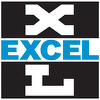 Designing restrooms to allow for and maximize proper hygiene is important in reducing the spread of germs. This course discusses the elements of hygienic restroom design and how reducing required touchpoints helps to increase safety and cleanliness. The key steps in proper hand hygiene are also discussed. The course then focuses on hand dryers and considers their impact on hand hygiene and sustainability. The future of commercial restroom design is then explored.
Designing restrooms to allow for and maximize proper hygiene is important in reducing the spread of germs. This course discusses the elements of hygienic restroom design and how reducing required touchpoints helps to increase safety and cleanliness. The key steps in proper hand hygiene are also discussed. The course then focuses on hand dryers and considers their impact on hand hygiene and sustainability. The future of commercial restroom design is then explored.

https://redirect.aecdaily.com/s5712/www.aecdaily.com/course/946869
This course contains sustainable design information. See the course details page for more information.
This course is part of one or more "Course Collections". Click here to view the details.
This course is ONLINE: SELF-PACED. Experience it on your own schedule, at your convenience.

 Designing to accommodate thermal movement is just one of the many critical details for the long-term success of a metal roof installation. This course covers the design and specification considerations and architectural details that impact project requirements, as well as the components and the energy-efficient features of metal roofing assemblies.
Designing to accommodate thermal movement is just one of the many critical details for the long-term success of a metal roof installation. This course covers the design and specification considerations and architectural details that impact project requirements, as well as the components and the energy-efficient features of metal roofing assemblies.

https://redirect.aecdaily.com/s719/www.aecdaily.com/course/903329
This course contains sustainable design information. See the course details page for more information.
This course is ONLINE: SELF-PACED. Experience it on your own schedule, at your convenience.

 Manufacturers, industry groups, architects, designers, and homeowners all share an expectation of safety in the buildings we occupy and use every day. This course discusses the key chapters where important exterior wall fire provisions can be found in the International Building Code® and examines many common features of global fire incidents. The course also describes the NFPA 285 fire test and discusses the new Annex B in the 2023 edition of NFPA 285. Finally, there is a discussion of the code compliance pathways when exterior walls are required by the IBC® to be tested and comply with NFPA 285.
Manufacturers, industry groups, architects, designers, and homeowners all share an expectation of safety in the buildings we occupy and use every day. This course discusses the key chapters where important exterior wall fire provisions can be found in the International Building Code® and examines many common features of global fire incidents. The course also describes the NFPA 285 fire test and discusses the new Annex B in the 2023 edition of NFPA 285. Finally, there is a discussion of the code compliance pathways when exterior walls are required by the IBC® to be tested and comply with NFPA 285.

https://redirect.aecdaily.com/s1039189/www.aecdaily.com/course/1049844
This course is ONLINE: SELF-PACED. Experience it on your own schedule, at your convenience.

 The diffuse light-transmitting and composite technology of translucent structural sandwich panels has increasingly caught the imagination of architects and designers because it is possible to maximize wall or roof daylighting while minimizing energy loss, with consequent savings in the running costs of heating, air conditioning, and artificial lighting. This course explores the fundamental connection between light and health by examining how translucent structural sandwich panels deliver glare-free, diffuse daylight deeper and more evenly into spaces with maximum thermal efficiency.
The diffuse light-transmitting and composite technology of translucent structural sandwich panels has increasingly caught the imagination of architects and designers because it is possible to maximize wall or roof daylighting while minimizing energy loss, with consequent savings in the running costs of heating, air conditioning, and artificial lighting. This course explores the fundamental connection between light and health by examining how translucent structural sandwich panels deliver glare-free, diffuse daylight deeper and more evenly into spaces with maximum thermal efficiency.

https://redirect.aecdaily.com/s8284/www.aecdaily.com/course/960286
This course contains sustainable design information. See the course details page for more information.
This course is ONLINE: SELF-PACED. Experience it on your own schedule, at your convenience.

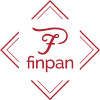 Bathrooms can be dangerous places for people with and without physical limitations. The prevalence of bathroom falls amongst persons of all age groups and levels of ability has driven the trend of accessible shower design. Presented here is an overview of how curbless shower pans are designed for durability and safety, and to meet the needs of accessible design. Included are discussions on traditional and modern shower pan design and installation methods and their associated drawbacks and benefits. Industry resources and standards are outlined.
Bathrooms can be dangerous places for people with and without physical limitations. The prevalence of bathroom falls amongst persons of all age groups and levels of ability has driven the trend of accessible shower design. Presented here is an overview of how curbless shower pans are designed for durability and safety, and to meet the needs of accessible design. Included are discussions on traditional and modern shower pan design and installation methods and their associated drawbacks and benefits. Industry resources and standards are outlined.

https://redirect.aecdaily.com/s13907/www.aecdaily.com/course/905632
This course contains accessible design information. See the course details page for more information.
This course is part of one or more "Course Collections". Click here to view the details.
This course is ONLINE: SELF-PACED. Experience it on your own schedule, at your convenience.

 Automated-shading systems are designed to maximize natural daylight, increase building energy efficiency, and ensure occupants have a comfortable environment with views to the outside. This course will explain how an automated shading system predicts, monitors, and responds to the daily microclimate surrounding a building to effectively manage daylight, solar-heat gain, occupant comfort levels, and energy use demands.
Automated-shading systems are designed to maximize natural daylight, increase building energy efficiency, and ensure occupants have a comfortable environment with views to the outside. This course will explain how an automated shading system predicts, monitors, and responds to the daily microclimate surrounding a building to effectively manage daylight, solar-heat gain, occupant comfort levels, and energy use demands.

https://redirect.aecdaily.com/s801701/www.aecdaily.com/course/821308
This course contains sustainable design information. See the course details page for more information.
This course is part of one or more "Course Collections". Click here to view the details.
This course is ONLINE: SELF-PACED. Experience it on your own schedule, at your convenience.

 Local vacuum networks are economical and sustainable systems that provide deep, stable, high-quality vacuum to a variety of lab environments. In this course, the environmental and performance benefits of local vacuum networks vs. central vacuum systems are explored, along with discussions on their components and design and installation considerations. Brief case studies are used to highlight the wide range of flexible, adaptable solutions supported by this strategy.
Local vacuum networks are economical and sustainable systems that provide deep, stable, high-quality vacuum to a variety of lab environments. In this course, the environmental and performance benefits of local vacuum networks vs. central vacuum systems are explored, along with discussions on their components and design and installation considerations. Brief case studies are used to highlight the wide range of flexible, adaptable solutions supported by this strategy.

https://redirect.aecdaily.com/s579160/www.aecdaily.com/course/865704
This course contains sustainable design information. See the course details page for more information.
This course is ONLINE: SELF-PACED. Experience it on your own schedule, at your convenience.

 Vinyl has long been a material of choice for construction products for interiors and exteriors because of its durability, cleanability, affordability, and suitability for a vast range of applications. This course furthers the conversation by discussing vinyl’s recyclability and sustainability and the attributes of laminated rigid PVC exterior and interior wall panels and siding and soffit products.
Vinyl has long been a material of choice for construction products for interiors and exteriors because of its durability, cleanability, affordability, and suitability for a vast range of applications. This course furthers the conversation by discussing vinyl’s recyclability and sustainability and the attributes of laminated rigid PVC exterior and interior wall panels and siding and soffit products.

https://redirect.aecdaily.com/s1042490/www.aecdaily.com/course/1060032
This course contains sustainable design information. See the course details page for more information.
This course is part of one or more "Course Collections". Click here to view the details.
This course is ONLINE: SELF-PACED. Experience it on your own schedule, at your convenience.

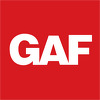 Single-ply membranes, along with their installation methodologies, have evolved to best meet the roofing needs of today’s low-slope commercial buildings. This course reviews the most prevalent membranes and describes the advantages and disadvantages of EPDM, PVC, and TPO. An overview of attachment methods is presented, as well as a discussion of single-ply system strength, cool roof benefits, and condensation issues from a building science perspective.
Single-ply membranes, along with their installation methodologies, have evolved to best meet the roofing needs of today’s low-slope commercial buildings. This course reviews the most prevalent membranes and describes the advantages and disadvantages of EPDM, PVC, and TPO. An overview of attachment methods is presented, as well as a discussion of single-ply system strength, cool roof benefits, and condensation issues from a building science perspective.

https://redirect.aecdaily.com/s6300/www.aecdaily.com/course/1046789
This course is ONLINE: SELF-PACED. Experience it on your own schedule, at your convenience.

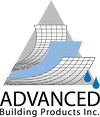 Building science experts acknowledge the need for drainage in both vertical and horizontal applications in order to eliminate moisture issues and extend the life of the building. This course examines foundation wall, green roof, and plaza deck applications and discusses the factors that impact drainage, including soil permeability, saturation, land cover, and loading. Flow rate standards are discussed, and drainage composite mat installation is explained.
Building science experts acknowledge the need for drainage in both vertical and horizontal applications in order to eliminate moisture issues and extend the life of the building. This course examines foundation wall, green roof, and plaza deck applications and discusses the factors that impact drainage, including soil permeability, saturation, land cover, and loading. Flow rate standards are discussed, and drainage composite mat installation is explained.

https://redirect.aecdaily.com/s671/www.aecdaily.com/course/992134
This course contains sustainable design information. See the course details page for more information.
This course is ONLINE: SELF-PACED. Experience it on your own schedule, at your convenience.